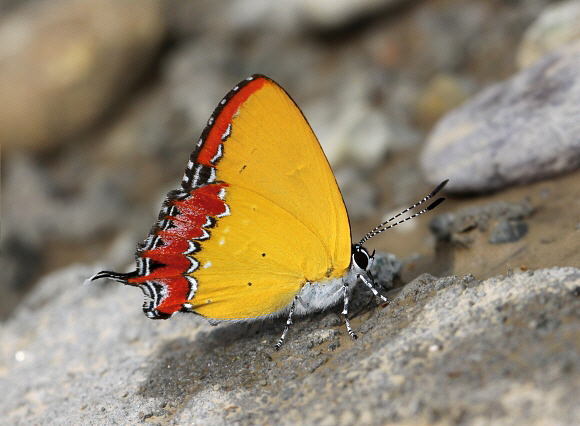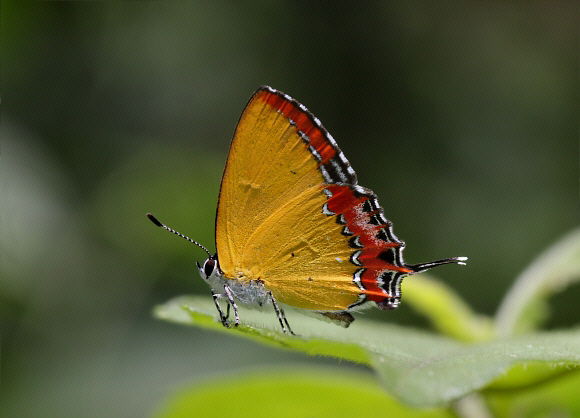
Introduction
The name Purple Sapphire may seem inappropriate for this pretty butterfly, but it actually refers to the colour of the upper surface of the wings, not the bright yellow and red underside! The butterfly has a rather hairstreak-like appearance but it is in fact a member of the tribe Lycaenini – commonly known as Coppers.
There are 10 Heliophorus species of which androcles, which occurs from Sikkim to western China, is the most dramatic. It has an underside similar to epicles, but on the upperside of the male, the basal area of the forewings is a dazzling iridescent blue in the wet season form, and a shimmering metallic green in the dry season form. Both sexes of epicles are similar in appearance, except that the orange markings on the upperside forewing are larger in the female.
Heliophorus epicles occurs in India, Burma, Thailand, peninsular Malaysia, Bhutan, Java, Sumatra, southern China and Taiwan, but is curiously absent from Borneo.
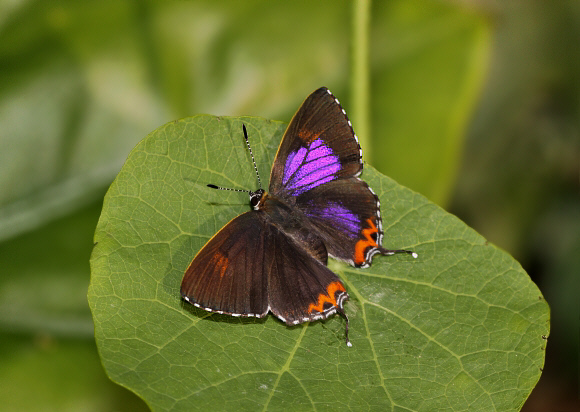
Habitat
This species is found mainly in disturbed forest edge habitats including roadsides and wide grassy forest tracks. It is found at elevations between about 200-1200m.
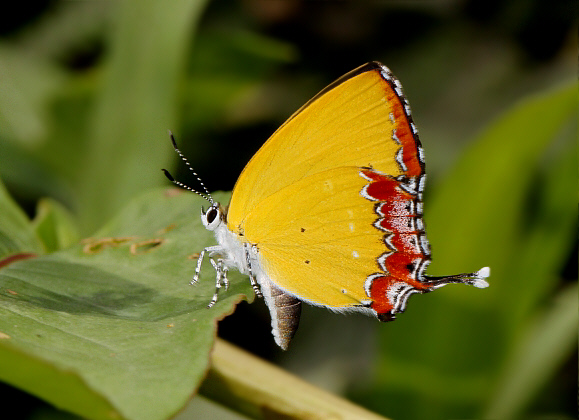
Lifecycle
To be completed.
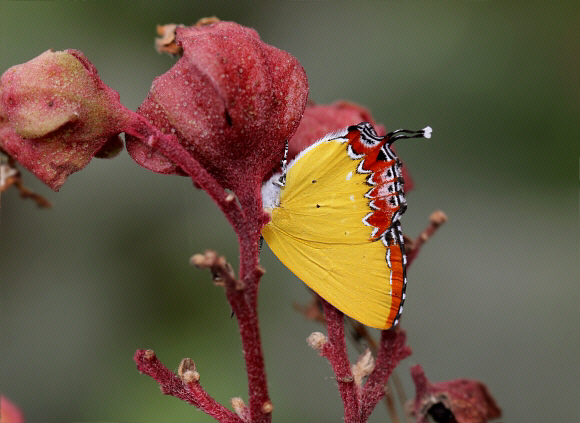
Adult behaviour
Both sexes can be found around bushes and herbage in full sunlight in forest edge habitats. They are hairstreak-like in behaviour – the males spending long periods perched on bushes. If two males meet, they engage in a very lively aerial sortie, twisting and turning in tight circles until one of the pair is shaken off, at which time the other returns to his perch. The loser of the battle very rarely learns from his lesson however, and often strays back into the other’s territory, getting chased away several times in succession.
Males also settle on damp soil, sometimes in groups of up to half a dozen, to imbibe mineralised little moisture. In warm but overcast conditions both sexes bask on herbage with wings almost fully outspread.
